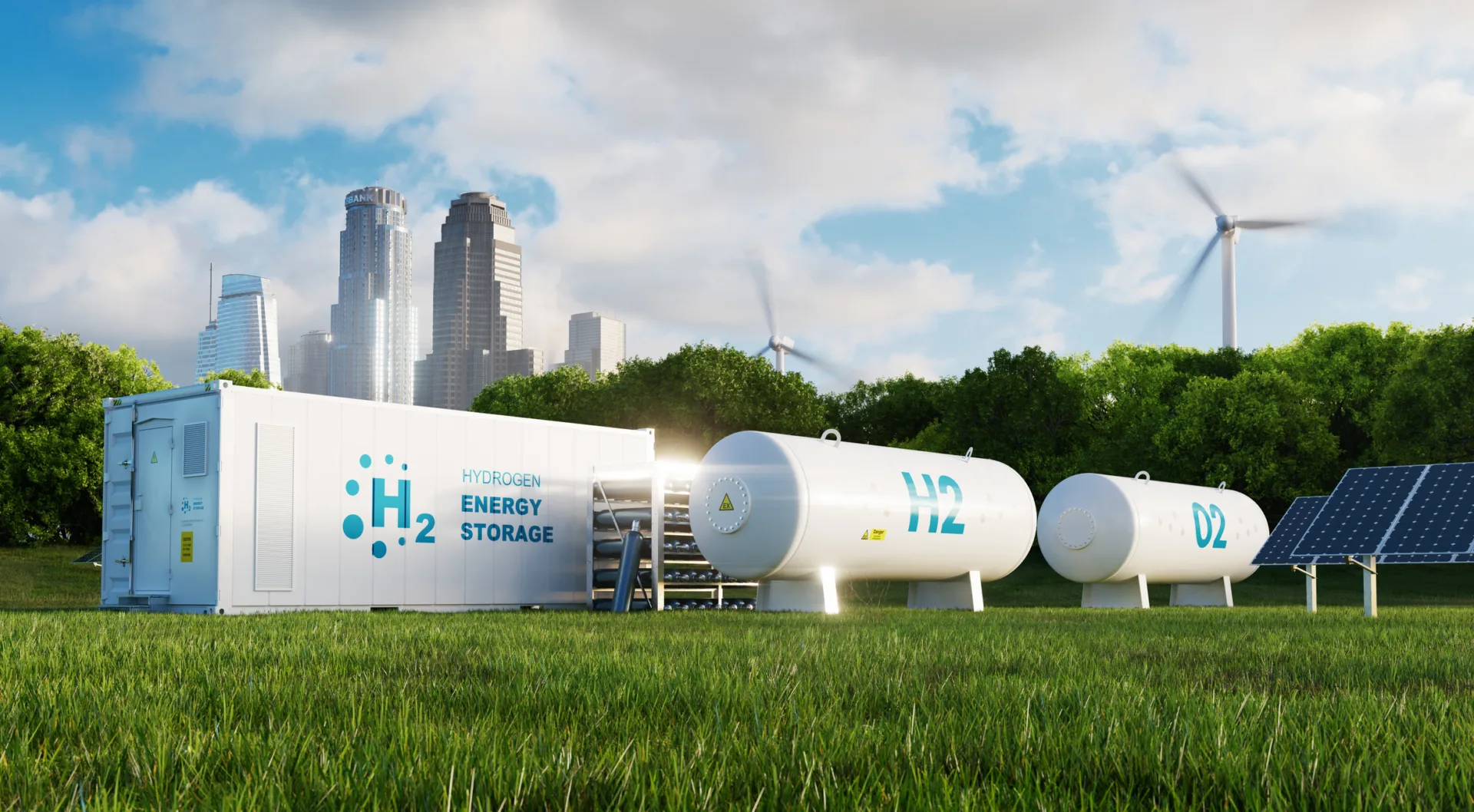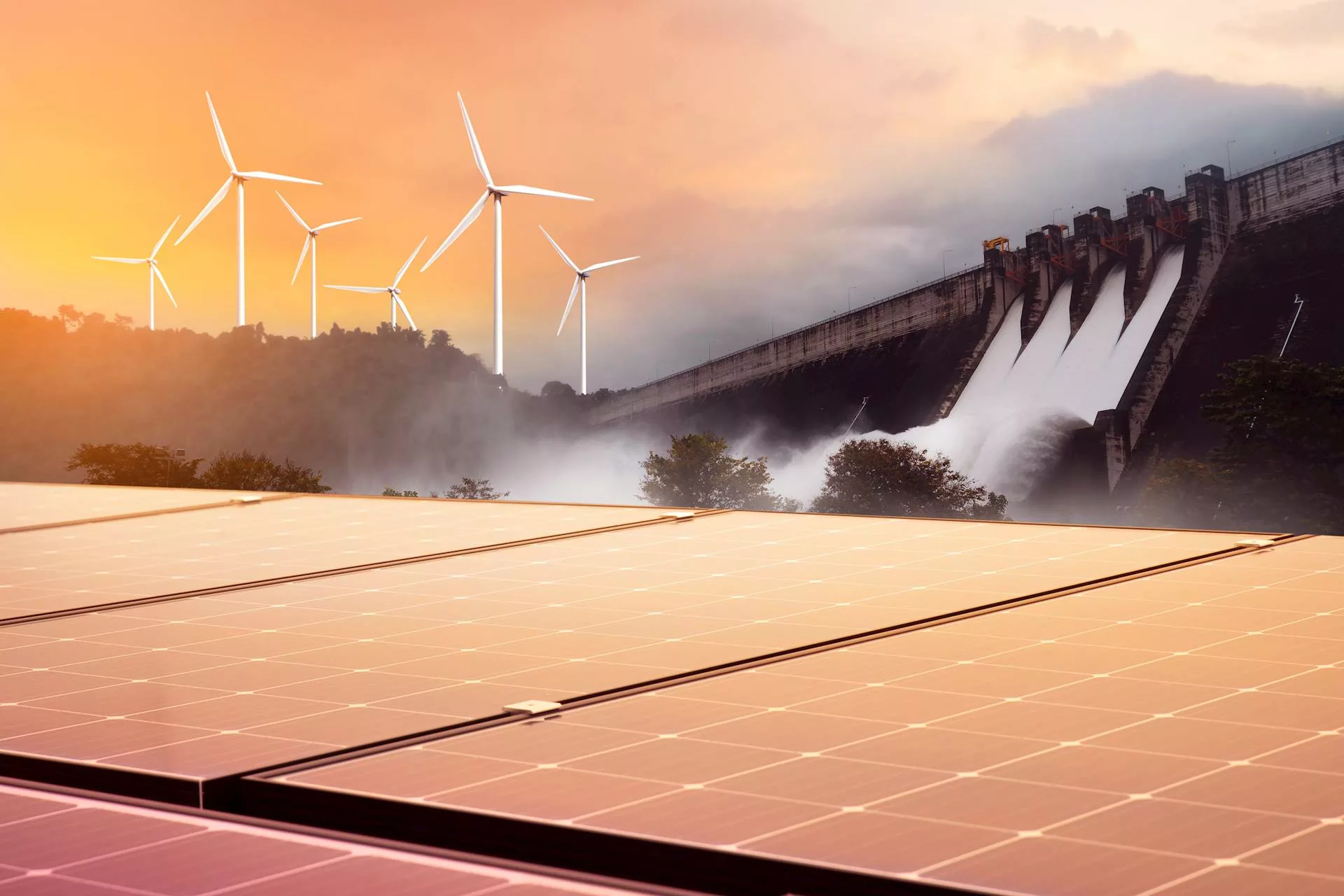
Affordable, on-site and on-demand hydrogen production will revolutionize the energy landscape, becoming the primary fuel source for heating and microgrids via fuel cells and large-scale power generation.
The energy challenge and the promise of hydrogen
We urgently need better energy systems that are sustainable and resilient. The concerns about energy security and our reliance on centralized infrastructure are increasing. Additionally, renewable energy sources don’t always produce power consistently.
Hydrogen is a promising energy source with many potential uses. Hydrogen packs a lot of energy into a small amount of fuel and doesn’t release harmful emissions when it’s used. Most importantly, hydrogen can help overcome the problem of renewable energy sources, like solar and wind, not being available all the time. This makes hydrogen a valuable option for a cleaner energy future.
Making hydrogen inexpensively, where it’s needed and when it’s needed, is crucial for the future of energy. This “affordable, on-site and on-demand” approach offers significant advantages. Producing hydrogen locally eliminates the costs and complexities of large central plants and long-distance transportation. This localized production can lead to more resilient energy systems and potentially lower overall costs for consumers.
Affordable, on-site hydrogen production will be the driving force for a decentralized, resilient, clean energy future, powering heating, microgrids and large-scale electricity generation.
Producing affordable, on-site and on-demand hydrogen
Producing hydrogen with current methods is costly. A significant portion of hydrogen production depends on fossil fuels, which contributes to environmental concerns. The infrastructure for transporting and storing hydrogen is insufficient. These challenges inhibit the widespread adoption of hydrogen as a clean energy carrier.
Improved electrolyzer technologies are making hydrogen production more efficient. The development of better materials and catalysts will lower production costs. Combining hydrogen production with local renewable energy sources allows for “green” hydrogen. Furthermore, hydrogen can potentially be locally produced using various resources such as biomass and solar-powered water splitting.
Creating ways to store hydrogen in smaller and more effective units is advancing some methods, including solid-state storage and advanced compression. Intelligent control systems are being developed to balance hydrogen production when it’s needed. Local hydrogen storage is important for reliable energy access and helps keep the power grid stable. These advancements in storage and control are necessary for making on-demand hydrogen a practical energy solution.
Using on-site hydrogen to transform energy sectors
Revolutionizing heating: Hydrogen can potentially transform heating by replacing traditional fossil fuels like natural gas through technologies such as hydrogen boilers and heating systems powered by fuel cells. Using hydrogen for heating can significantly lower emissions, leading to improved air quality and a greater potential for energy independence. Various case studies and pilot projects are underway to explore the feasibility of hydrogen-based heating solutions.
Powering microgrids: Fuel cells provide a reliable, clean method to power local microgrids. Combining on-site hydrogen production with renewable energy in these microgrids creates an independent system. This approach brings several advantages, including stronger grid resilience, fewer energy losses from long-distance transmission and greater local control over power. Moreover, it enables communities to operate independently from the main grid when necessary.
Large-scale power generation: This concept explores using hydrogen as a clean fuel in the power plant’s thermodynamic Rankine cycle for large-scale power generation. It involves adapting gas turbines to run on hydrogen. A key benefit is the potential for dispatchable renewable energy, allowing power generation when needed, thus helping with grid stability. Additionally, this approach offers the advantage of using the power plant’s current infrastructure.
Picturing a future in which on-site hydrogen provides energy
Environmental benefits: Using hydrogen energy offers substantial environmental advantages by significantly decreasing greenhouse gas emissions and harmful air pollutants. This reduction directly supports efforts to achieve the necessary climate change mitigation targets. Furthermore, producing green hydrogen through electrolysis can be done more sustainably using water resources. Therefore, hydrogen plays a vital role in the transition toward a zero-carbon energy system.
Economic opportunities: The rise of hydrogen energy will generate significant economic opportunities. New industries will emerge, focusing on hydrogen production, storage solutions and its various applications. This expansion will lead to the creation of numerous skilled jobs in areas like manufacturing, installation and maintenance. A key economic advantage is the potential to lessen dependence on the global markets for fossil fuels. This shift toward hydrogen can foster greater energy independence and accelerate economic growth.
Innovation, job creation and energy independence: The development of hydrogen energy will spur the growth of new sectors dedicated to its production, storage and applications. This expansion will create numerous employment opportunities in the manufacturing, installation and maintenance of hydrogen technologies. Economically, a significant benefit will be the decreased reliance on the fluctuating global fossil fuel markets. This transition toward hydrogen can strengthen energy independence and stimulate domestic economic growth. The expanding hydrogen economy promises a wave of innovation and economic benefits.
Social implications: Generating hydrogen locally can empower remote and underserved communities with better energy access. By enabling on-site generation, these communities become empowered with greater control over their energy supplies, reducing dependence on centralized infrastructure. Furthermore, decentralized hydrogen systems enhance resilience by providing a more reliable source of power during natural disasters and grid outages. This localized approach fosters energy equity and strengthens community self-sufficiency.
Challenges and the way forward
Several technological challenges need to be overcome for widespread hydrogen adoption. A key focus is further reducing the cost of electrolyzers used for hydrogen production and fuel cells, which convert hydrogen to electricity. Developing more efficient and smaller ways to store hydrogen is also crucial. And ensuring the safety of hydrogen technologies and gaining public trust are essential for its successful integration into the energy system.
Policy and regulatory frameworks
The widespread adoption of hydrogen energy needs supportive government policies and financial incentives to encourage industry growth. Establishing clear standards and regulations is vital for the safe and efficient production and use of hydrogen. Significant investments in research and development are essential to accelerate technological advancements and reduce costs. These policies and regulatory frameworks will provide the necessary foundation for a successful hydrogen economy. Without this support, the transition to a hydrogen-based energy system will face significant obstacles.
Affordable hydrogen production where it’s needed has the power to significantly change our energy systems. This approach offers major advantages for heating our buildings, powering local microgrids and generating electricity on a large scale. To realize this potential, we need ongoing innovation in hydrogen technologies, supportive government policies and smart investments in its development. Achieving a combined effort will pave the way for a cleaner and more resilient energy future.





